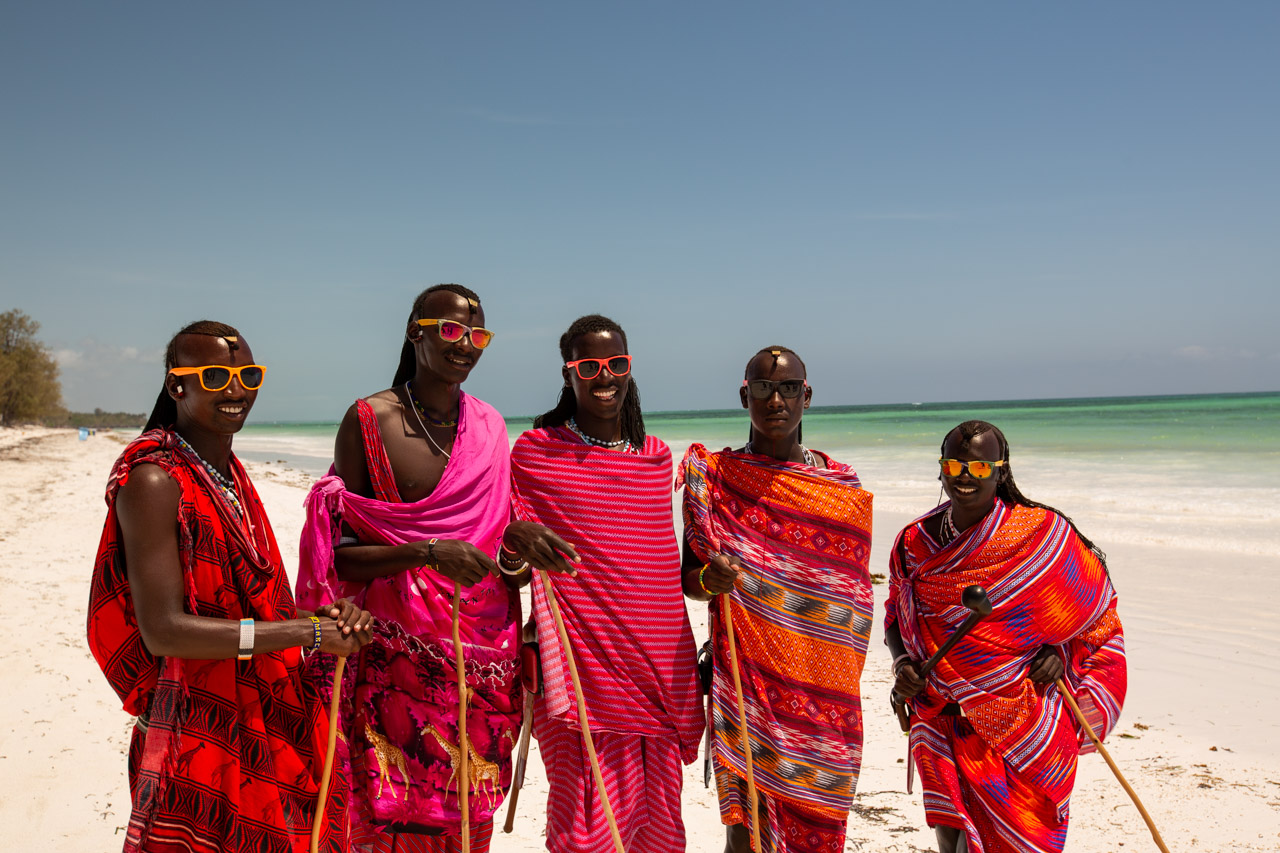We know the iconic image: a red-clad Maasai proudly eyeing the endless savannah. For decades, the red-clad Maasai have won the world’s attention for upholding their traditional way of life. But does the future for the Maasai really look as endless as the horizon? We travelled to a Maasai village to meet the legendary people.
Written by Mette / Photo by Martin
The article has been published in Vagabond Travel Magazine, 2017
Translated from Danish
A human shape leaves the shade of an acacia tree. The sun is high in the sky above the vast plateau. The heat waves make the outline of the lean figure flutter. As we approach, the figure starts waving, but our driver, Zamo, makes no sign of slowing down. A trail of dust jets behind the jeep and surrounds the man in a red mist as we whiz by. “I don’t pick up the Maasai,” Zamo declares subtly.
We are on our way to the Ngorongoro Conservation Area in northern Tanzania. An area larger than Zealand, which in the early 1960s, was designated as a protected reserve, and as an experiment: The area was to be both a setting for the unique wildlife and developed into an attractive tourist destination and at the same time serve as the home of the Maasai. A nomadic people who for centuries have wandered where ever it suited them.
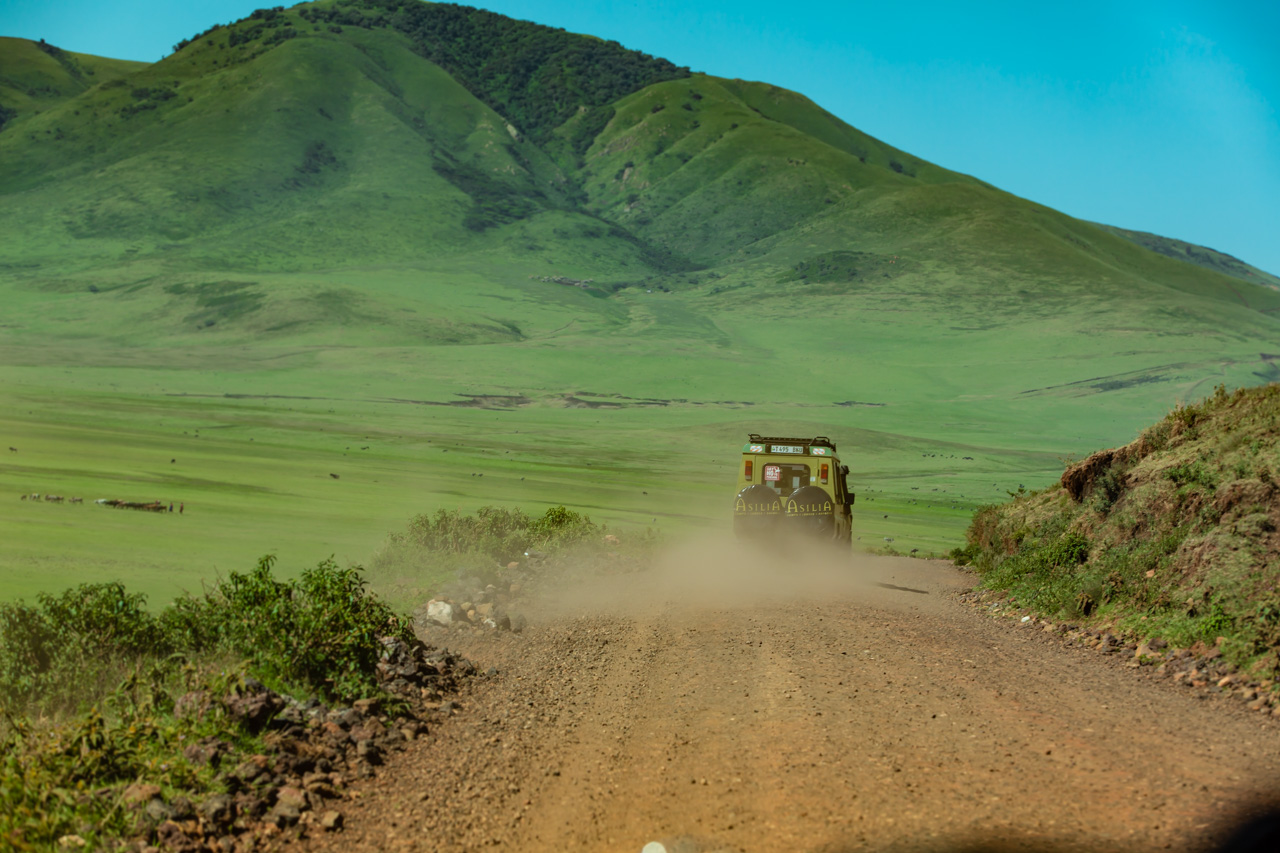
The Maasai were first described around 200 BC. as a pastoral society that revered their cattle and followed them on long journeys in search of sustenance. In the 18th century, it was common for the people to dominate large areas in East Africa, which were also referred to by the Maasai’s own place names. Most famous was the ‘Siringet’, which was the central part of the Maasai homeland. Today known as the Serengeti.
But from the mid-19th century, the Maasai were weakened by long periods of drought, disease, and war, and were a vulnerable people when the British took power after the First World War. The Serengeti was included as a hunting reserve, and after repeated conflicts over the area, the British evicted the Maasai in 1959. They were forcibly relocated to Ngorongoro.
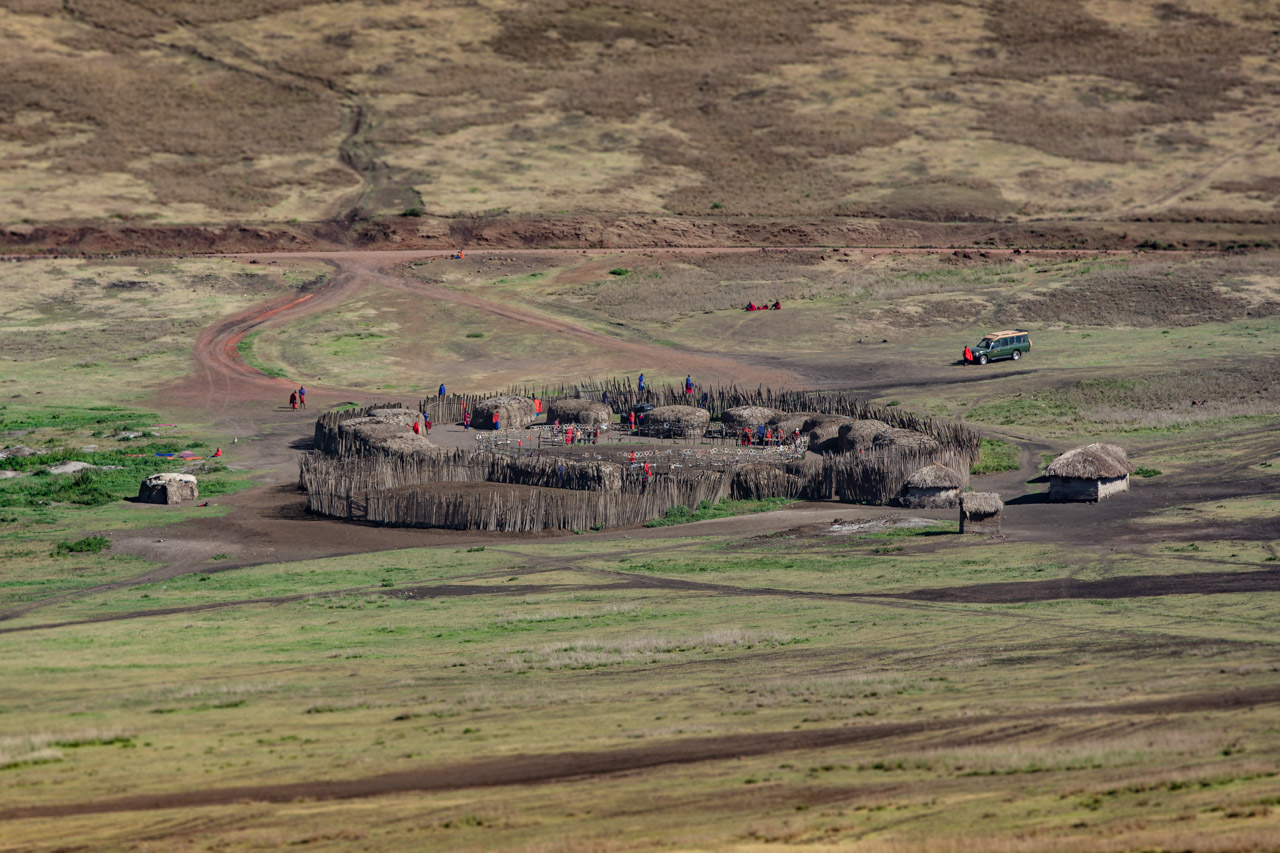
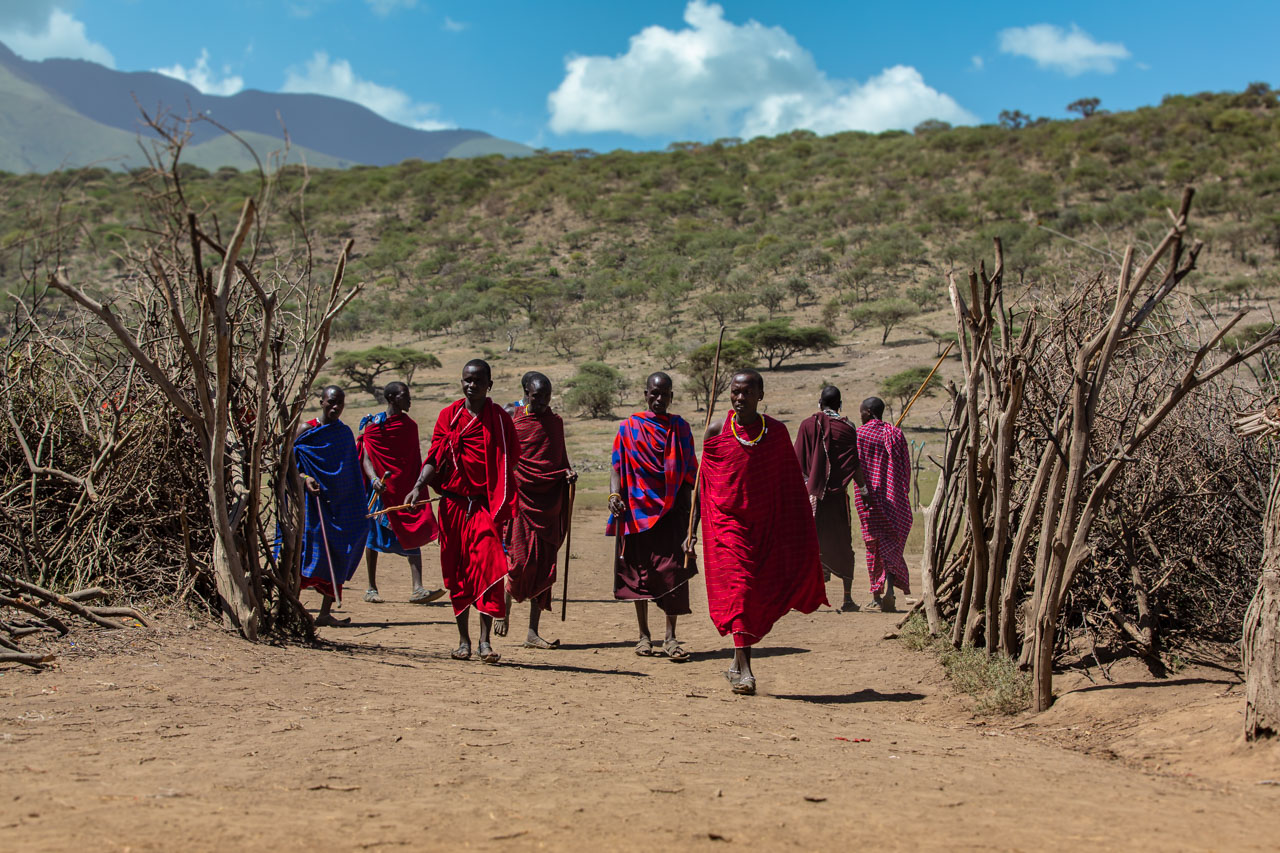
The king of cattle
Unpleasant experiences hide behind Zamo’s contempt towards the Maasai. As a driver for safari tourists, he spends many hours on the roads in Maasai country and has previously given Maasai people a lift: “They stole my things, behaved threateningly, and were often drunk,” he says. The story surprises us, as it is far from fitting the image, we had of the Maasai as noble and beautiful nomads.
Zamo believes that the Maasai’s behaviour is partly related to their cultural roots. Originally, the Maasai believed that they were God’s chosen tribe and had the right to all the cattle on earth. They happily stole cattle from other tribes, never bowed to anyone, and had a reputation for being so warlike, that everyone else kept their distance. Even the barbaric slave traders avoided the Maasai.
Today, the Maasai’s fearless, self-sufficient, and proud nature is considered one of the reasons why their culture has survived the upheavals of time. And their lifestyle has earned them stardom. Because even though they only make up 2% of Tanzania’s population, comprising over 125 different tribes, the Maasai – along with the lion, the elephant, and the giraffe – are the main attraction of the tourism industry.
Maasai women are famous for their handmade jewelry, which is made of pearls in nine different primary colors. Although the individual colors are given symbolic meaning, it is a widespread misconception that specific color combinations can be read as complex messages. The women only use the colors to create beautiful decorations. Therefore, it is often also possible to decipher the age of the jewelry based on the trends that have prevailed over the years.
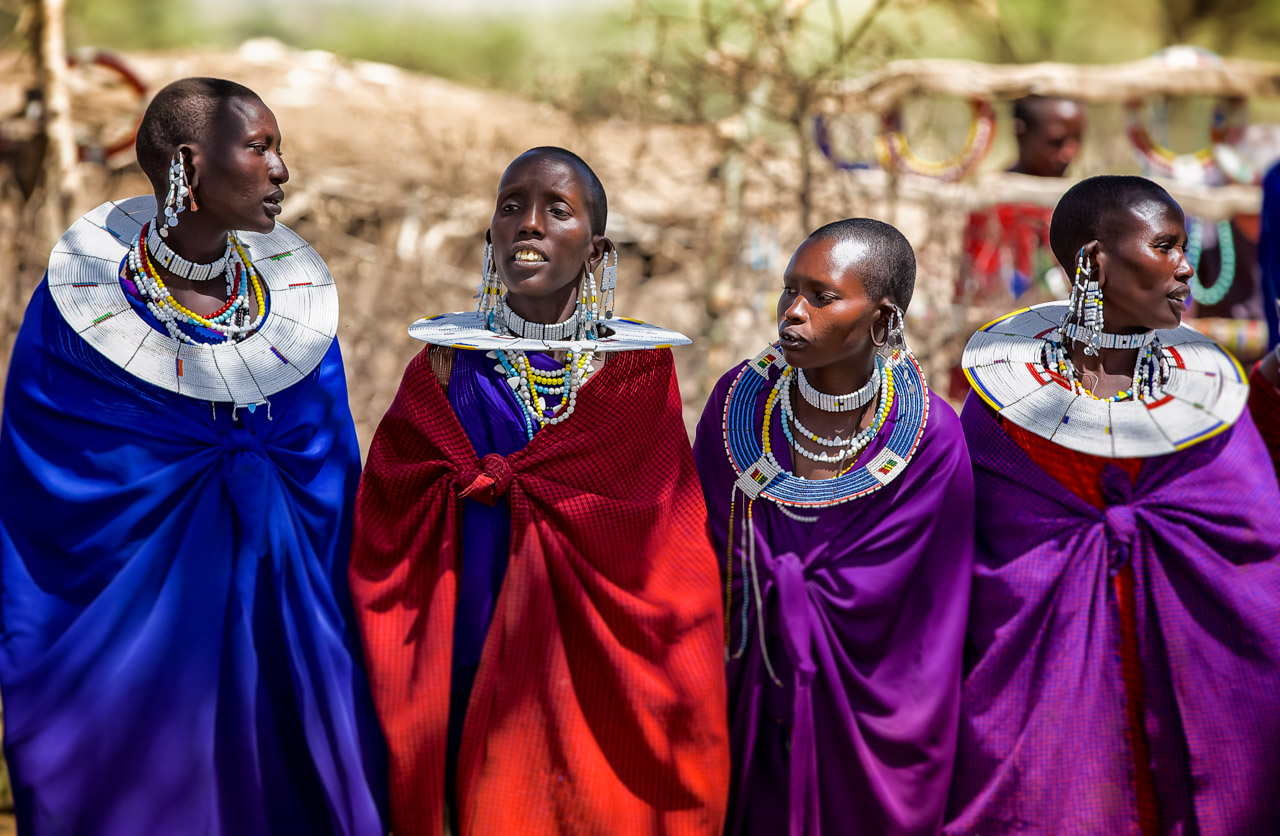
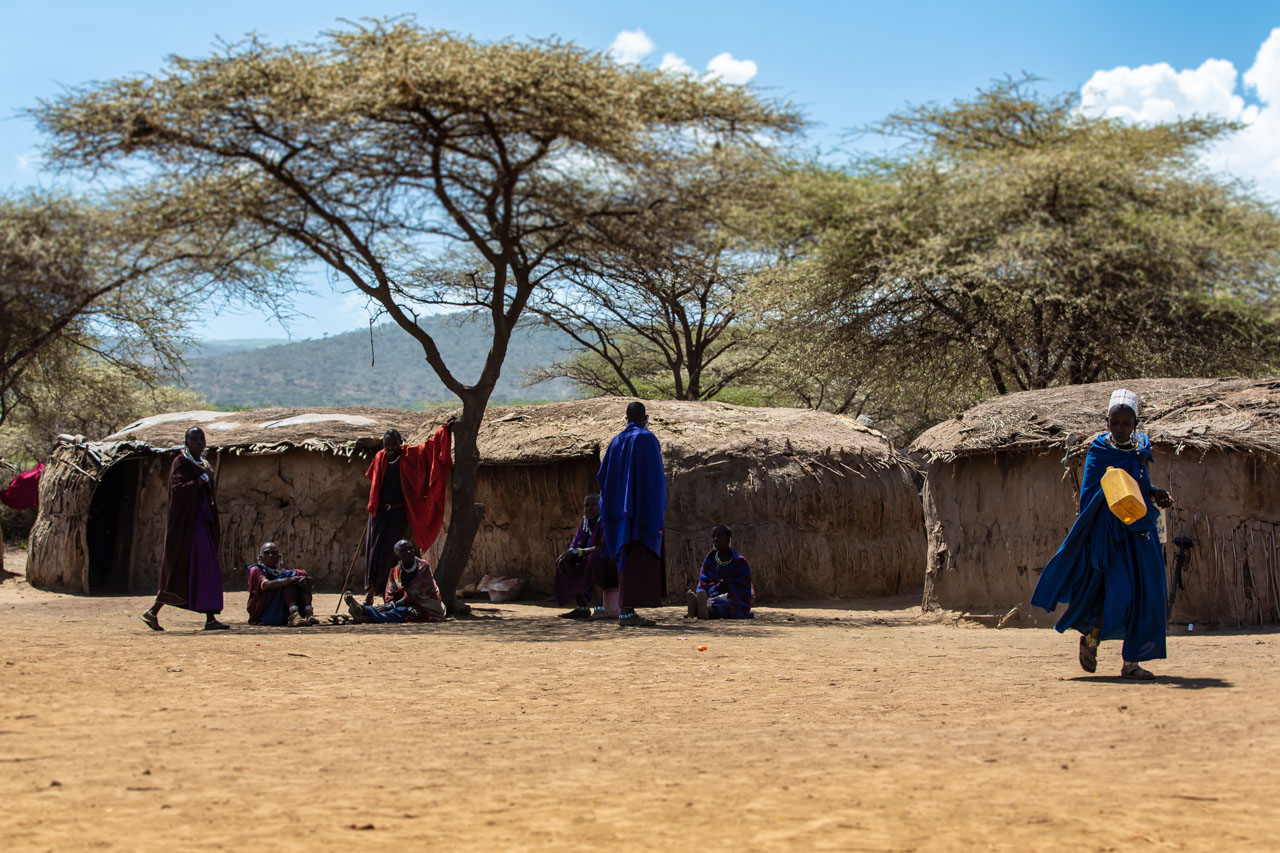
A life as a tourist attraction
After several hours of driving through Ngorongoro’s rolling volcanic highlands, we park in front of a small Maasai village. The camera’s digital screen bears witness to a journey through an impressive landscape, where wild animals roam freely and Maasai live in traditional huts that look like earth-brown toadstools. We have pictures of everything from striped zebras to rare rhinos. But not a single one of the Maasai.
“Maasai don’t want to be photographed unless you pay them,” Zamo explained earlier when we asked if he could stop the jeep close to three boys who posed heroically in front of their cattle when they saw us drive by. Over the years, the Maasai have become aware of the value of photography. Some voices believe that their traditional way of living is hanging by a thin thread, while others think the income from tourism can end up being their salvation.
“Jambo, jambo”
“Jambo, jambo”, greets a Maasai standing at the entrance to the village. He is tall, wearing a red toga-like suit and brightly colored pearl jewelry. The head is straight, the ear lobes have large holes, and the hand holds a long stick. His name is Miliya and he wants to show us his village. “Please take pictures,” he adds smiling. I look at Zamo, who nods in agreement. Money has been exchanged.
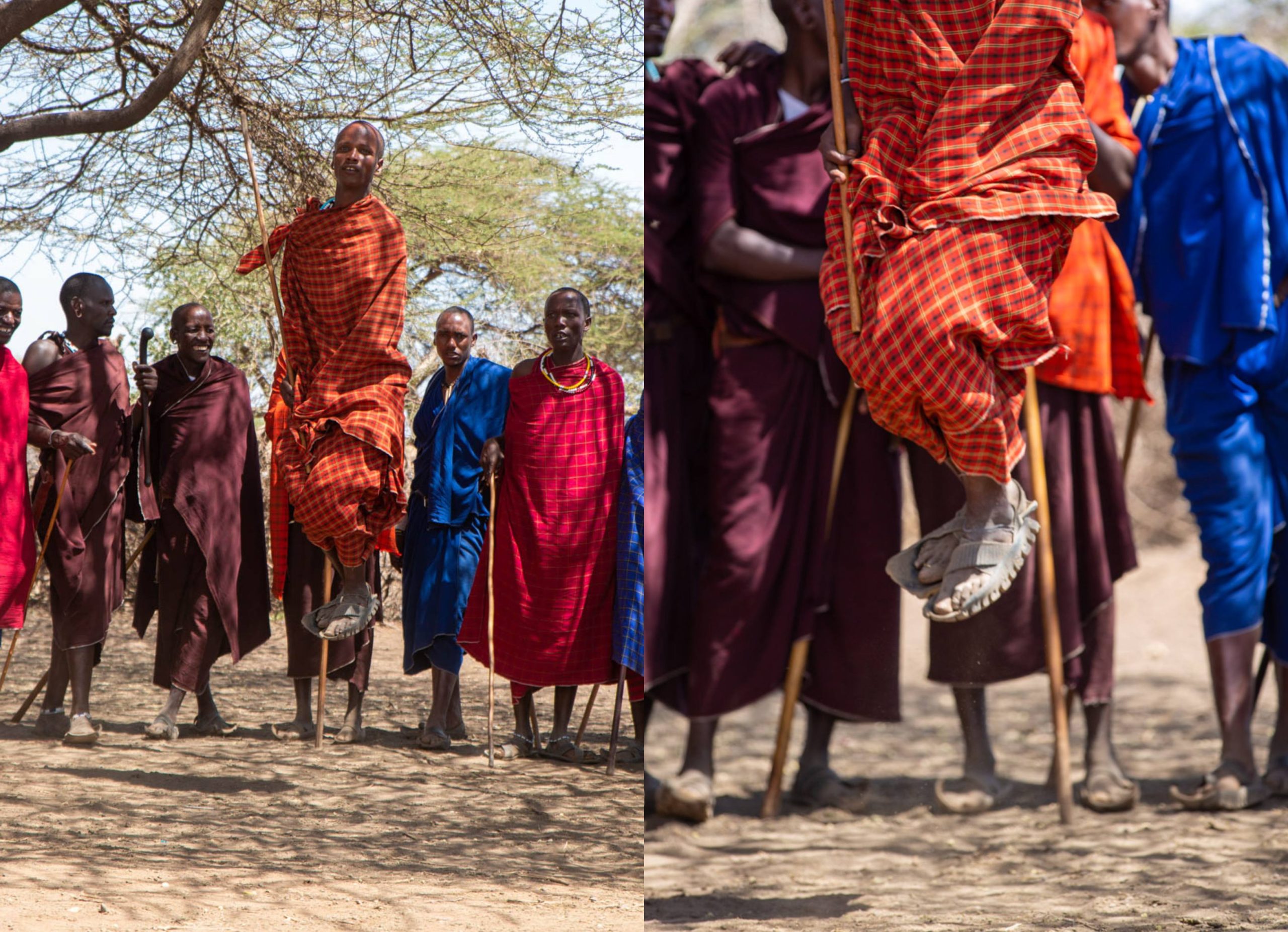
Jump like a Maasai
The village is surrounded by a fence made of branches and brambles, which protects the dwelling from wild animals. The Maasai have never been hunters, but fiercely defend their cattle and will gladly kill a lion if necessary. Behind the fence, the cabins are arranged in a circle around a large square. Here the cattle stand at night.
Traditionally, it is the smaller children and the women who dominate the picture in a Maasai village. The men, the city’s warriors, are out to graze the cattle and don’t come back until the evening. But not here. Just under 30 men have lined up under the shade of a tree, and in front of them is a large group of tourists crowded together. The men are ready to show the traditional welcome dance, tells Miliya.
The Maasai begin humming deeply, almost chanting, and dance stomping around in a ring. Soon after, loud howls are heard, and one by one the men jump, without running, straight up into the air, as if they had springs mounted under their sandals. The jumps are a feat of strength that proves their power and manliness. The experience is fascinating, and for a moment we forget the touristic circus that our presence helps to create.
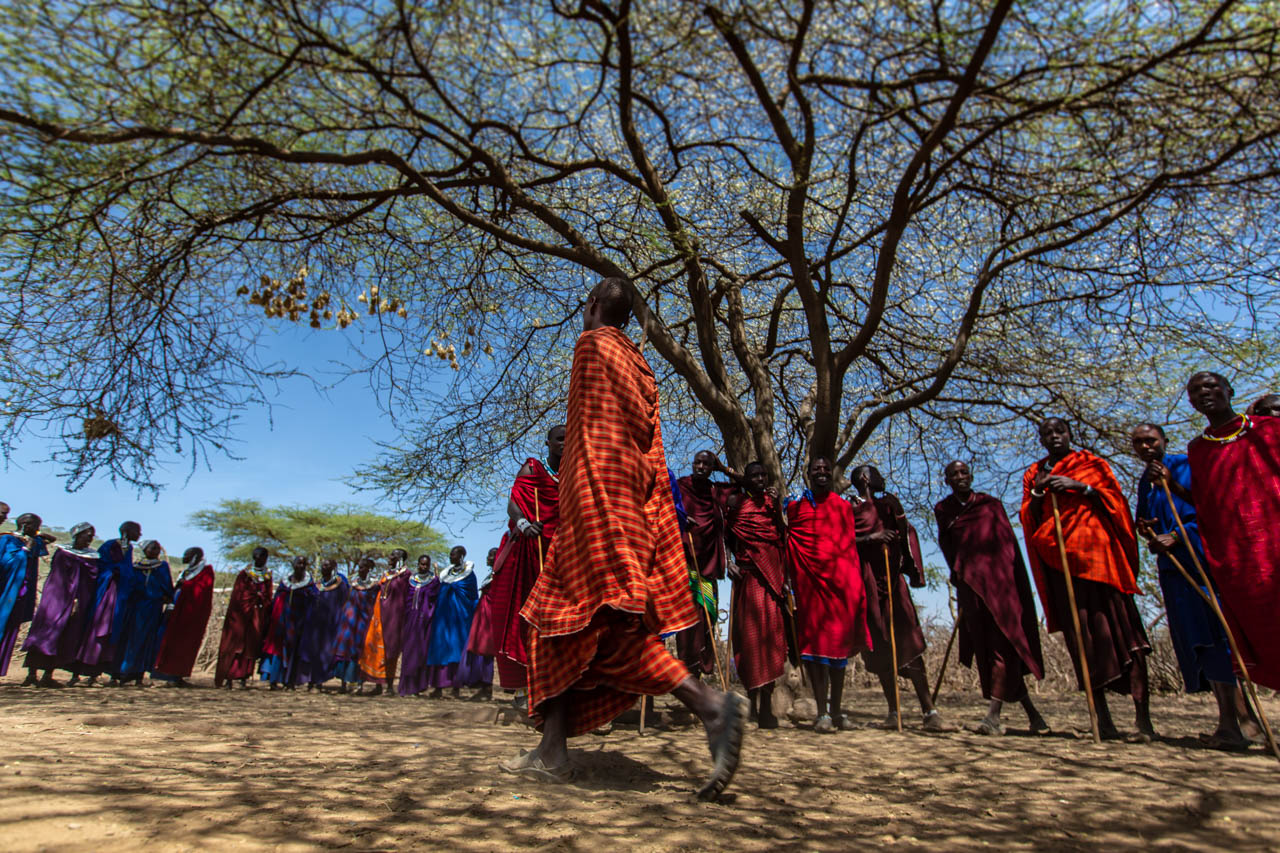
Women and cows
Miliya guides us to a small hut belonging to a family of five. He points to a woman standing next to a German girl who is capturing the moment with a selfie. “She has built,” he says in his sparse English. Among the Maasai, it is the women who do most of the work in the village. They look after the children, milk the cows, cook, and build the huts made of cow dung.
We edge through the narrow and low opening and are enveloped in darkness, heavy heat, and the smell of smoke and cow. The hut consists of a shared sleeping area built from branches and cowhide, a fireplace with a pot, and a room where the calves are let in at night. It provides warmth on cold nights but also prevents the calves from drinking all the cows’ milk.
Miliya says that the cow is a sacred animal that gives the Maasai everything they need. And precisely milk is an essential part of their daily nutrition. It is either mixed with blood from the cattle or fermented with cow urine and grass ash. Meat is only eaten on special occasions.
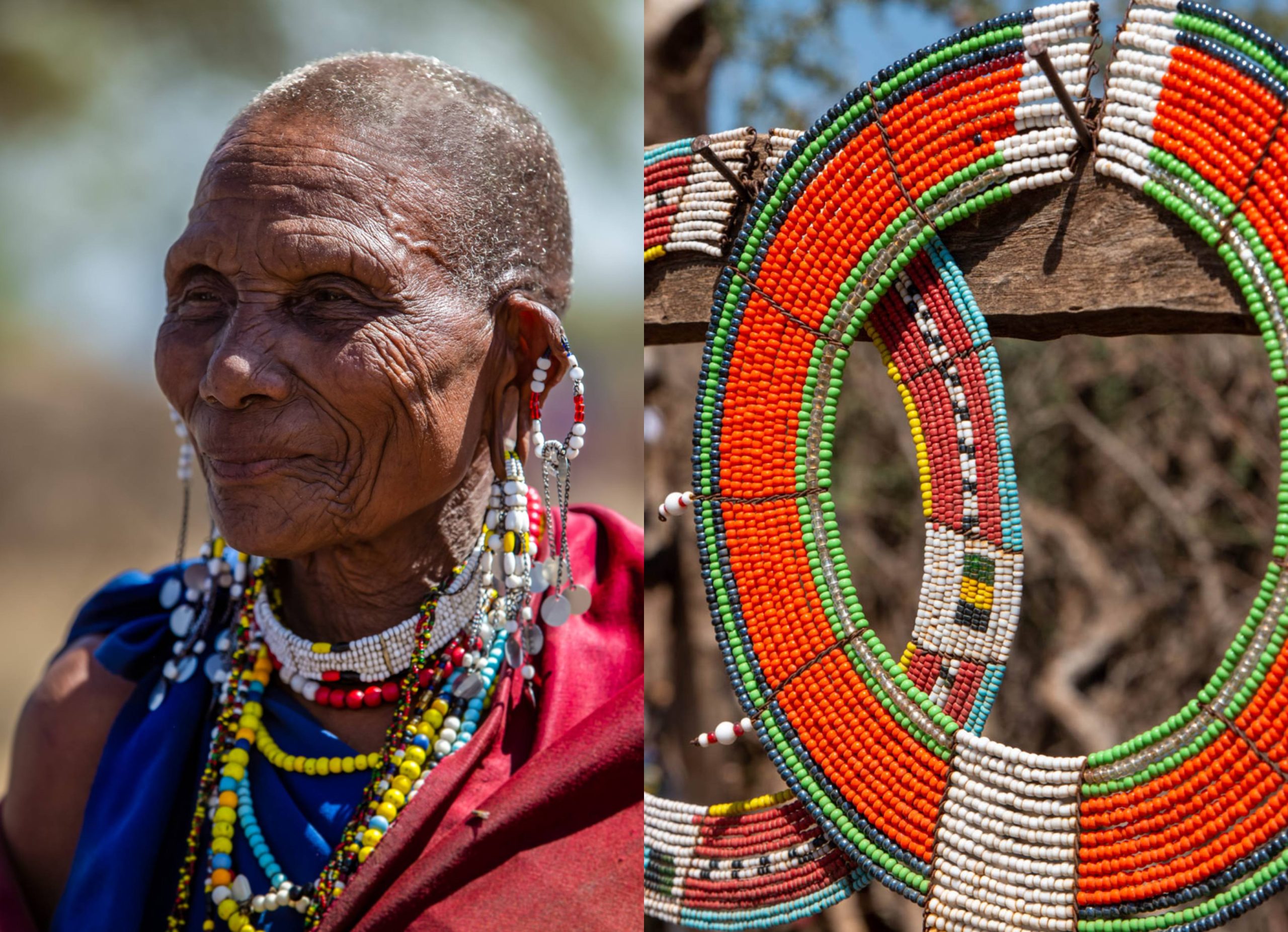
Nature’s people in a pickle
The Maasai lifestyle has not only given them the limelight in the tourism industry, but also in the climate debate. They are a good example of people living in perfect balance with nature. As cattle nomads, they do not over-cultivate the land in the same way as permanent residents, they leave no polluting waste products, and do not hunt wild animals.
Whether the Maasai can maintain their way of life is another matter. Because the state’s curtailment of Maasai land makes their situation fragile. Grazing the cows requires that the people have space to move them from pasture to pasture. They are sandwiched between nature parks and new settlements, which often brings them into conflict with the authorities.
At the same time, the limited territory has meant that the Maasai have not been able to expand their cattle herd as the population has grown. Their prosperity, still measured in cattle, has shrunk. Like the rest of the population in Tanzania, the number of Maasai has grown significantly since the early 1960s, when the country became independent. Today, over 50.000 Maasai live in Ngorongoro, which is far more than the 10.000 that the state originally allowed in order not to strain the ecosystem.
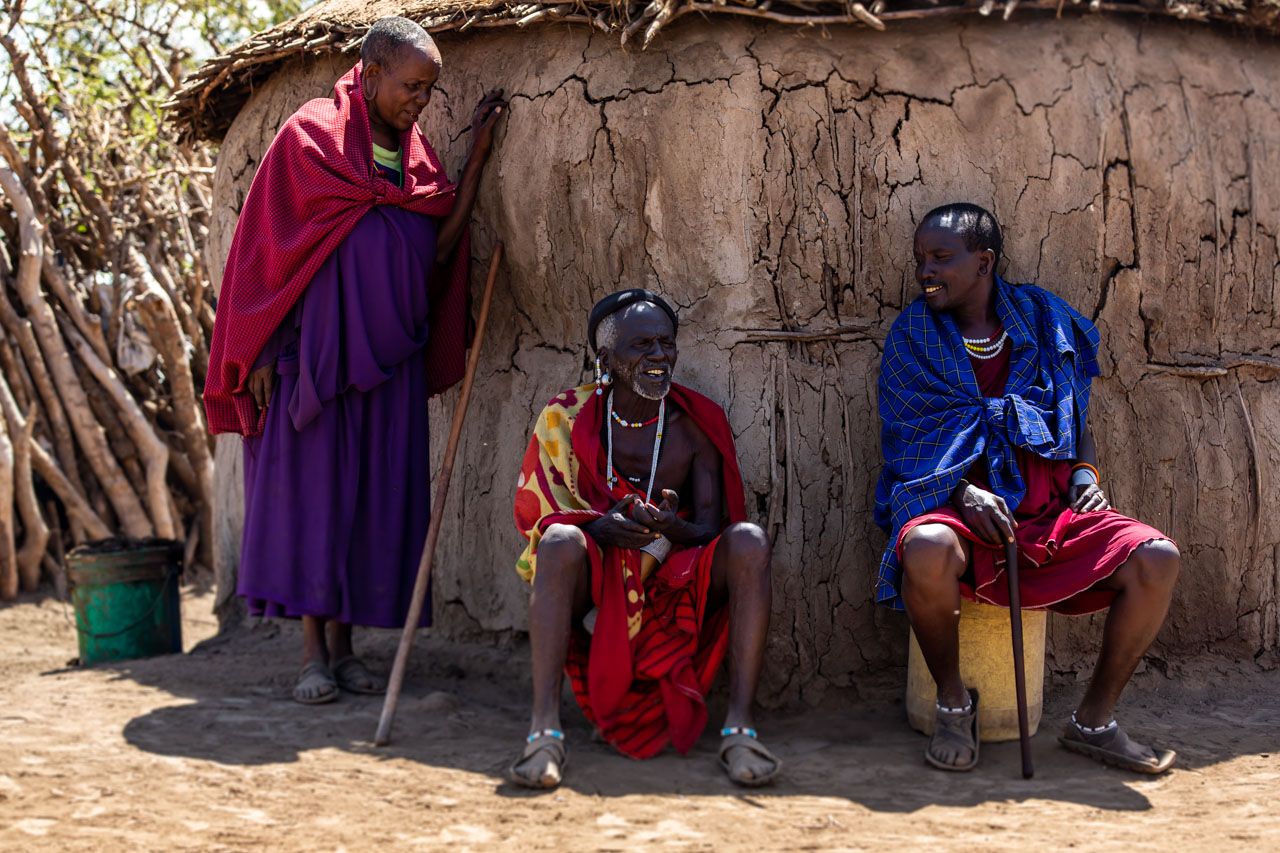
Past and future
“My father had many cows and wives,” says Miliya proudly when we ask about his family. Miliya will not reveal how many he has himself, but several of his brothers have left to earn money in the city so they can afford their own animals – and thus also buy a wife or two. Even today, if a Maasai has only one wife, it is a sign of poverty.
Life and not least Maasai life is harsh out on the savannah. And because of the development, the tribal people have started leaving their homes to exchange warrior spears and herds of cattle for fixed wages. More and more are getting an education or working as guides, drivers, and guards for safari camps and hotels.
Back in the village old traditions are dying. The Maasai spend less time walking. Now they leave a day or two at a time instead of weeks and months. They return home to their permanent huts, marry people from other tribes, and dress in t-shirts, pants, and hiking boots. And ringtones from mobile phones can be heard everywhere.
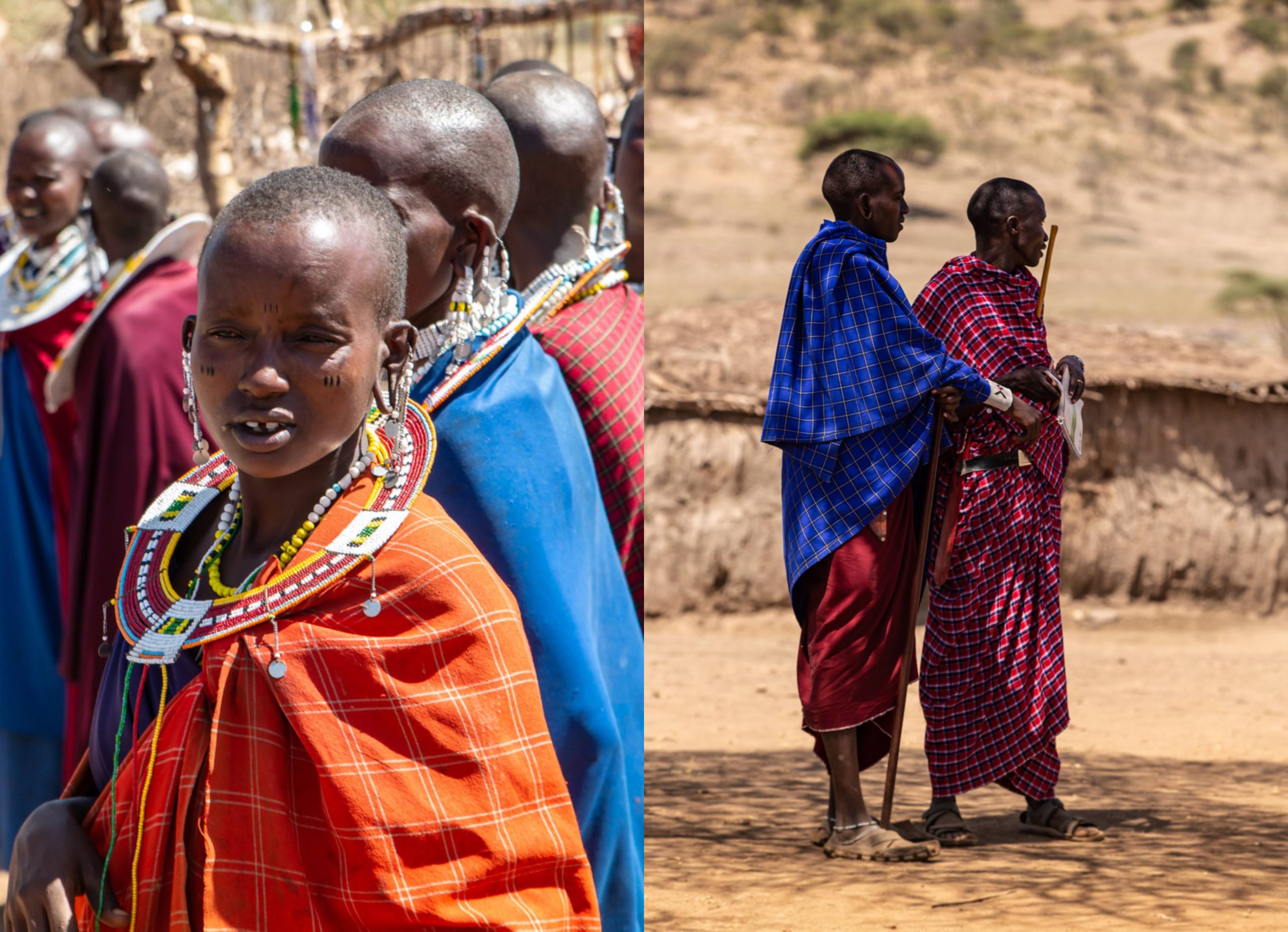
Custodian in own museum
“I am 42 years old and have lived here all my life. I don’t want to live anywhere else.” It is clear that Miliya is proud of himself and his tribe. He loves life with the animals and practices speaking English so he can tell the tourists about the Maasai way of life.
And he must do well as a village guide. Because he has two wives – which suddenly becomes very evident as he guides us to an exhibition of pearl jewelry that his wives have created. We know why our tour of the village ends right here. It is time to open our wallets.
When we get out of the village, Zamo is waiting for us. He shakes his head smiling when we tell him the price of the jewelry we bought: “You have been cheated,” he laughs and sends Miliya a smile and friendly wave.
